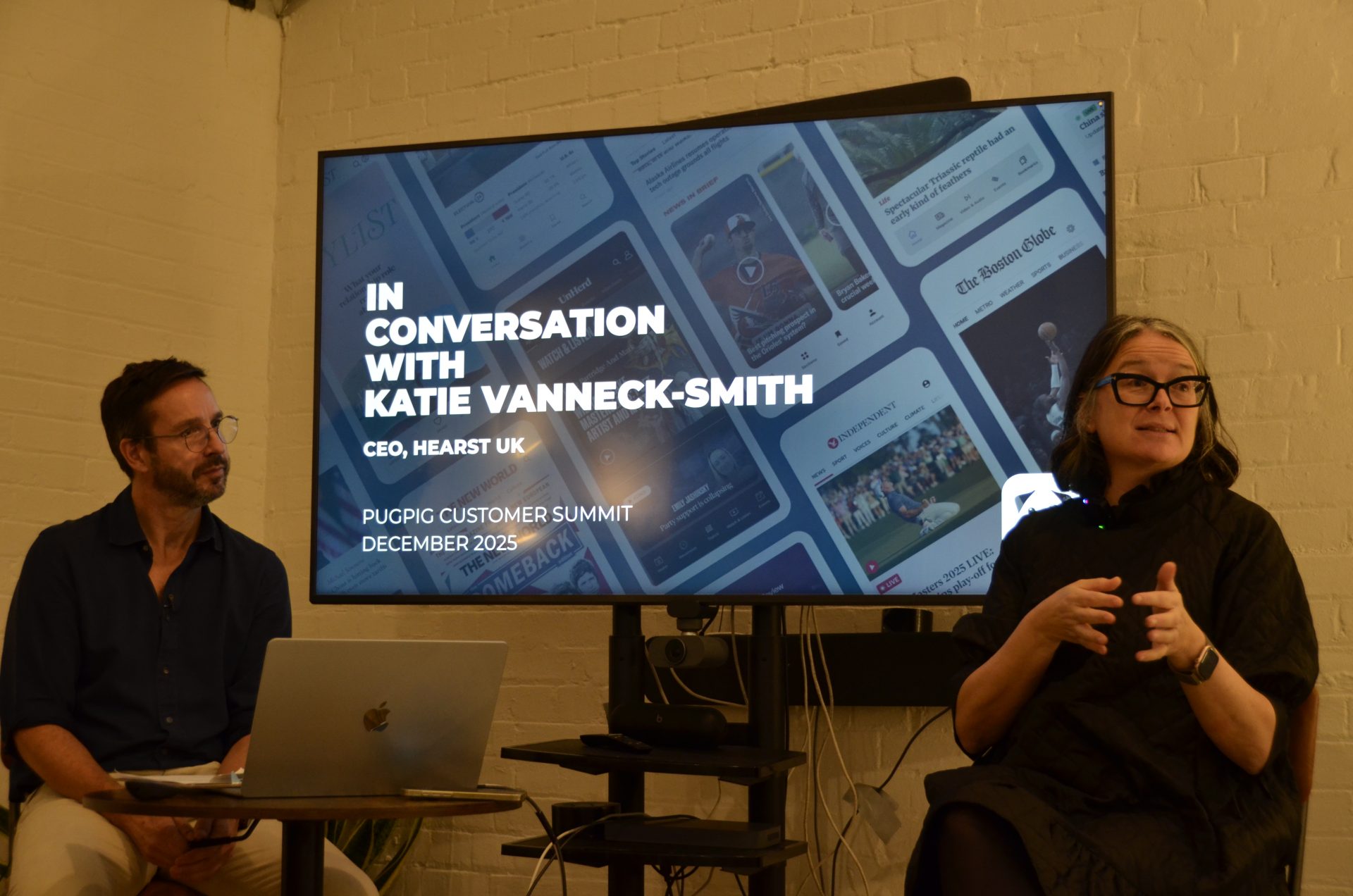
Newsletter
Newsletter
We sketch out a framework for integrating apps into your audience and revenue strategies and provide examples of how publishers use it.
27th September 2024
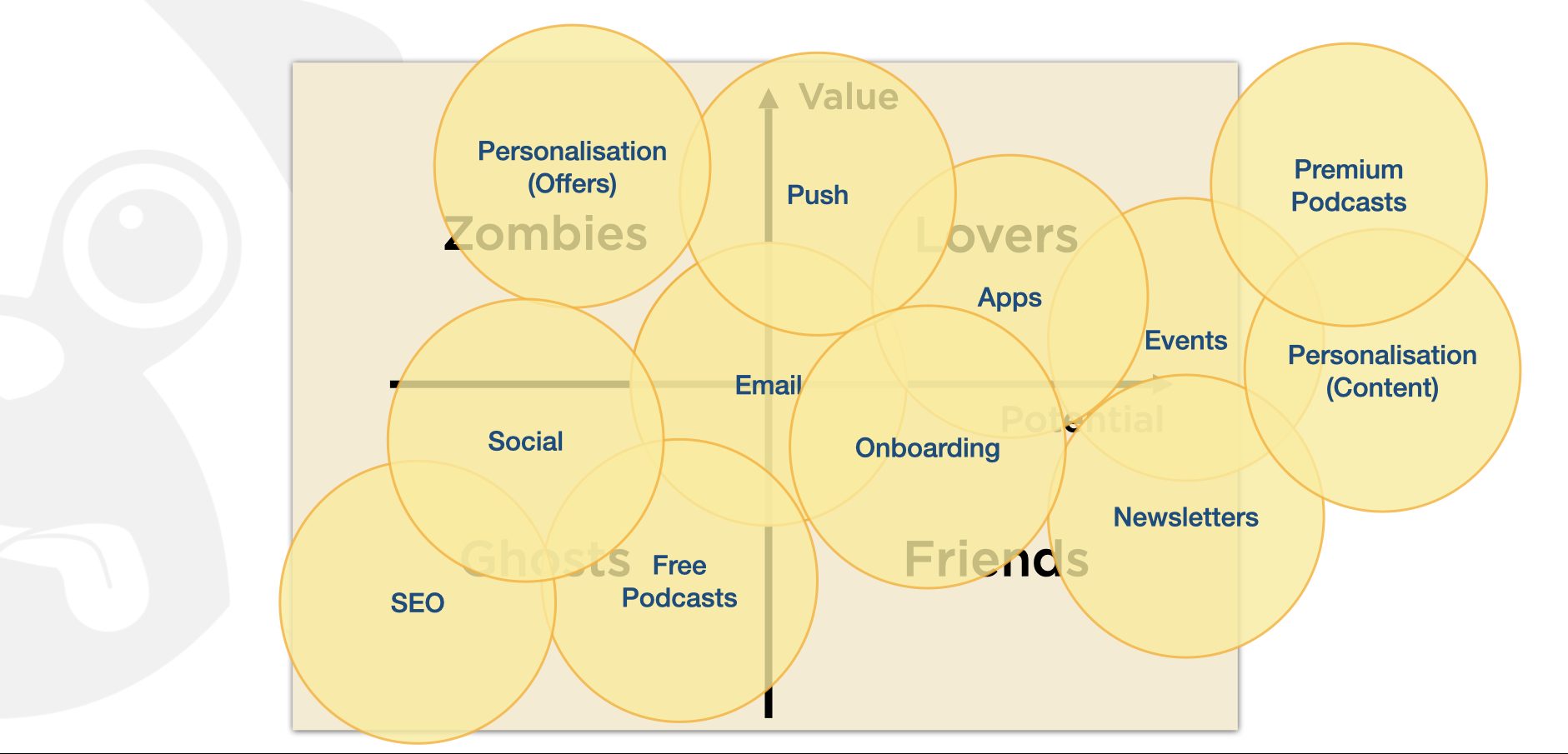
Our recently launched Mobile Matters community is growing, and if you are interested in or work in mobile publishing, you can join by filling out this short form. One of the conversations there sparked this week’s topic, particularly how to use apps as an acquisition tool. It is fair to say that for most publishers apps are a member or subscriber engagement and retention tool that super-serve your most loyal, engaged audiences. But it got me thinking of tactics to grow that pool of loyal audience members.
Speaking of community, we also had a great conversation about the content strategy needed to build a community. Communities need an intentional content strategy and experimentation to engage audiences. We also had questions about Apple News+ benchmarks. I’m on the case in finding those.
If you’re a publisher and want to join the beta group, please complete this short form, and you can also check out the Mobile Matters hub on our website where we’ll be building a library of case studies and strategies guides on mobile publishing best practices. Now, on to this week’s Media Bulletin and the power of onboarding to support retention.
Working with publishers to increase the success of their apps, we have learned their success is directly related to the extent to which those apps are integrated into their editorial and commercial strategy.
Last year with our partners in the Media Collective, we made the case that retention was about relationship management rather than simply managing churn. The same can be said about other steps in awareness, engagement and conversion, as well as the role of apps in publishers’ strategies.
Different marketing, audience engagement tactics and products have their place depending on the relationship audience members develop with you. Moreover, you need to take an audience member on a journey from first becoming aware of you and not knowing your content or how much time they want to commit to those who develop loyal habits and become regular newsletter readers, podcast listeners and app users.
Users who have just discovered your content will have a different relationship with you than those who have signed up for your newsletter or a free podcast, registered to get access to additional articles, attended an event, or downloaded your app.
An app is not an island. Successful publishers integrate them into conversion funnels and engagement loops to increase the loyalty of already engaged users and retain their most valuable customers.
Two things happened this week that reminded me of the importance of having a methodical, integrated approach to audience development. One, I am working on a presentation with two fellow members of the News Product Alliance for the group’s virtual summit in two weeks. We will be talking about audience development in the post-platform era and how to tackle the continued disruption media businesses are experiencing in the wake of the collapse of Facebook and Twitter referrals.
The session will build on the Media Collective’s report on retention in which we reframed traditional audience segments in terms of their current and future potential. In true Pugpig fashion, we had some fun naming these segments based on their relationship with publishers.
Our NPA session takes this metaphor a little further. One of my session co-facilitators, Fabienne Meijer, and I had too much fun developing this framework. The overall theme of the presentation is all about the stages of relationships we have with our audiences and what role platforms and our owned platforms play in those stages. We’ll be leading an interactive session that looks at:
The relationship starts with discovery, often through SEO. In our extended relationship metaphor, search is the meet-cute, when characters destined to be a couple first connect in a movie.
Search remains an important first point of contact. Chartbeat released its latest data about referrals to news sites. Despite fears of the impact of Google’s AI summaries, search traffic has been a consistent source of traffic, with its mobile-focused Discover product driving an increasing number of referrals.
Keeping up with our relationship metaphor, newsletters and free podcasts are the equivalent of when the relationship develops into regular, consistent dates.
Further into the relationship, an app is the deepest commitment. You’ve moved in together and are part of each other’s daily habits and schedule.
It’s a light-hearted way of thinking about funnel management which puts the focus squarely on the depth and quality of relationships with your audiences and the different off-platform tactics and owned property tools involved in deepening that relationship. These tactics and tools do not exist in isolation and should be used to support one another.
Newsletters and podcasts are the starting points for audience habits. For your most loyal audiences, apps supercharge those habits and play a key role in the retention of subscribers. As Edward Roussel, the head of digital at the Times and the Sunday Times, recently said, app users are 50% more likely to renew their subscriptions than non-app users.
Eric Ulken, the VP of product at the Baltimore Banner, told our friends at Media Voices about the role of apps for a local news start-up. “(A)pps have become table stakes for news organisations, especially subscription-driven news organisations,” he said, adding: “It’s not for everybody. And that’s one of the things that we’ve learned over time is that not all our users are going to be app users. But for those who want it, it’s a really powerful tool.”
As we highlighted in our Retention Economics report, there is value at every stage of the funnel, and these tools should be used to keep users engaged in whatever depth of relationship is appropriate for them. Publishing professionals such as Elizabeth Couch, Director of Audience at Crain Communications’ City Brands, stress the importance of engagement loops. Free newsletter subscribers may get their needs met with that product and not feel the need to register or buy a subscription. It is important to keep these users engaged with the newsletter rather than to lose touch with them.
The second thing that happened was I delivered strategy seminars for WAN-IFRA to Southeast Asian publishers. To prepare, I researched how major publishers in the region are integrating their apps into their strategies, and they showed how they are working to deepen their relationships with mobile audiences. It takes the concepts and frameworks of engagement-centric audience development and shows them in action.
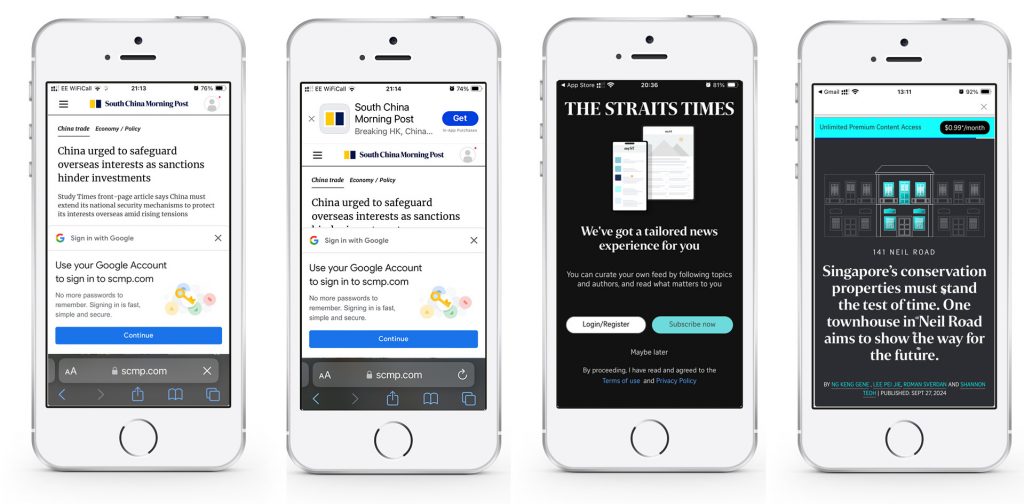
When a user comes to the South China Morning Post’s mobile site from search, they are prompted to log in using their Google credentials, a lightweight way for a user to start their relationship with SCMP.
SCMP also uses smart banners to prompt users to download their mobile app, and if the user already has their app, it would prompt them to open the story in the app. This helps re-engage users who haven’t opened the app in a while.
The Strait Times offers up textbook examples of the relationship-centric engagement flow we outlined. Their newsletter promotes their app as well as a Telegram chatbot they have created, adding another touchpoint for mobile audiences.
The Straits Times demonstrates the value of clear calls to action in their in-app onboarding sequence, and they offer an example of using an app for user acquisition. Their first onboarding screen prompts users to opt-in for push notifications, while the second screen leads with a message selling the value of app personalisation. Users are encouraged to register or subscribe to unlock this value.
Push notifications highlight interactive content in the app, and when an unknown user clicks through to access this premium content, they see a subscription offer.
Most publishers have accepted that they cannot build a sustainable business on unknown users, no matter how many they can attract via search, social media, or their marketing efforts. With the majority of audiences consuming content on mobile devices, engaging these audiences is more important than ever. Apps have their place, but to realise their full potential, publishers need to methodically deepen their engagement with audiences with all of their products and audience development technique
If you want to continue the conversation about using apps as an acquisition tool, please, join the Mobile Matters community, and let’s discuss your onboarding strategies.
Here are some of the most important headlines about the business of news and publishing as well as strategies and tactics in product management, analytics and audience engagement.

Newsletter
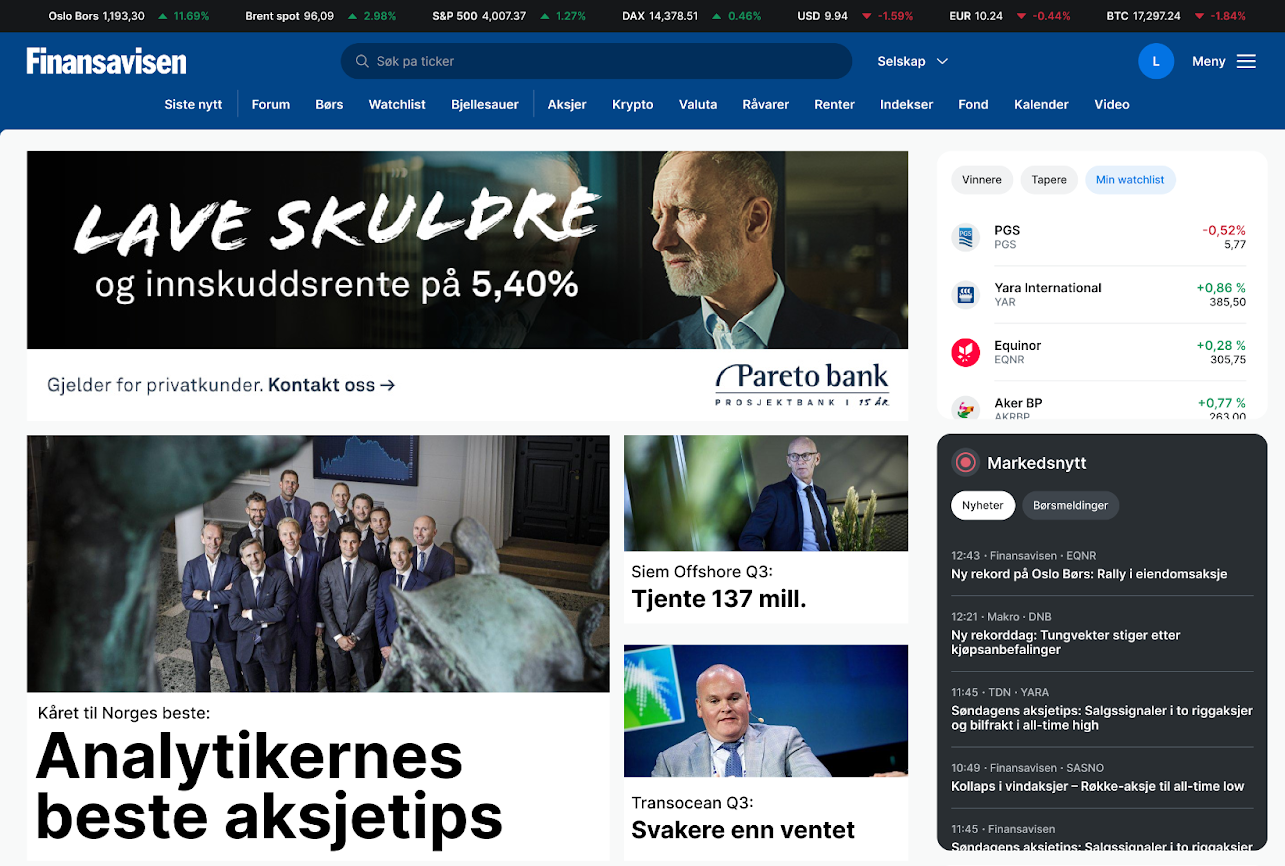
Newsletter
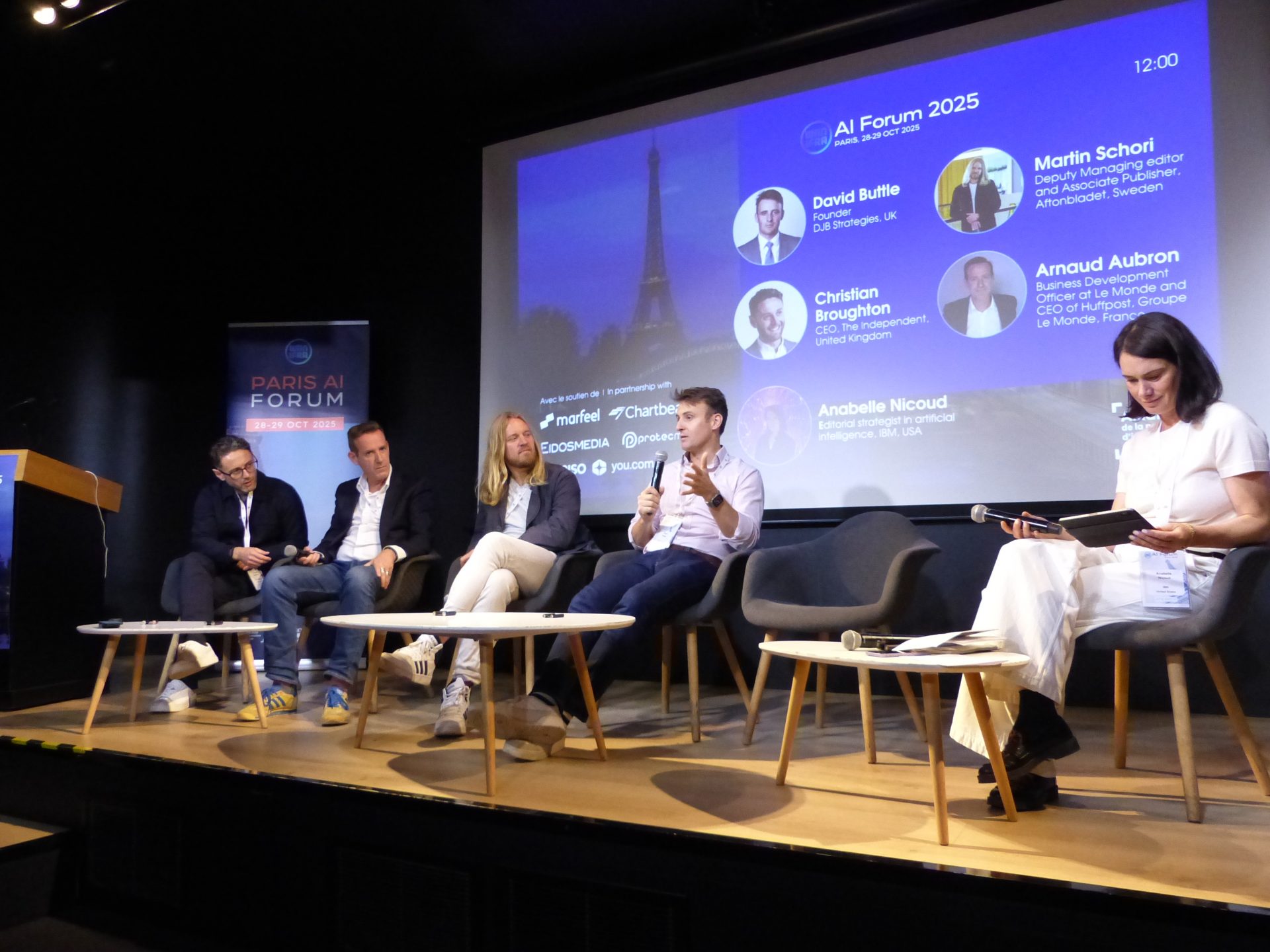
Newsletter

Newsletter
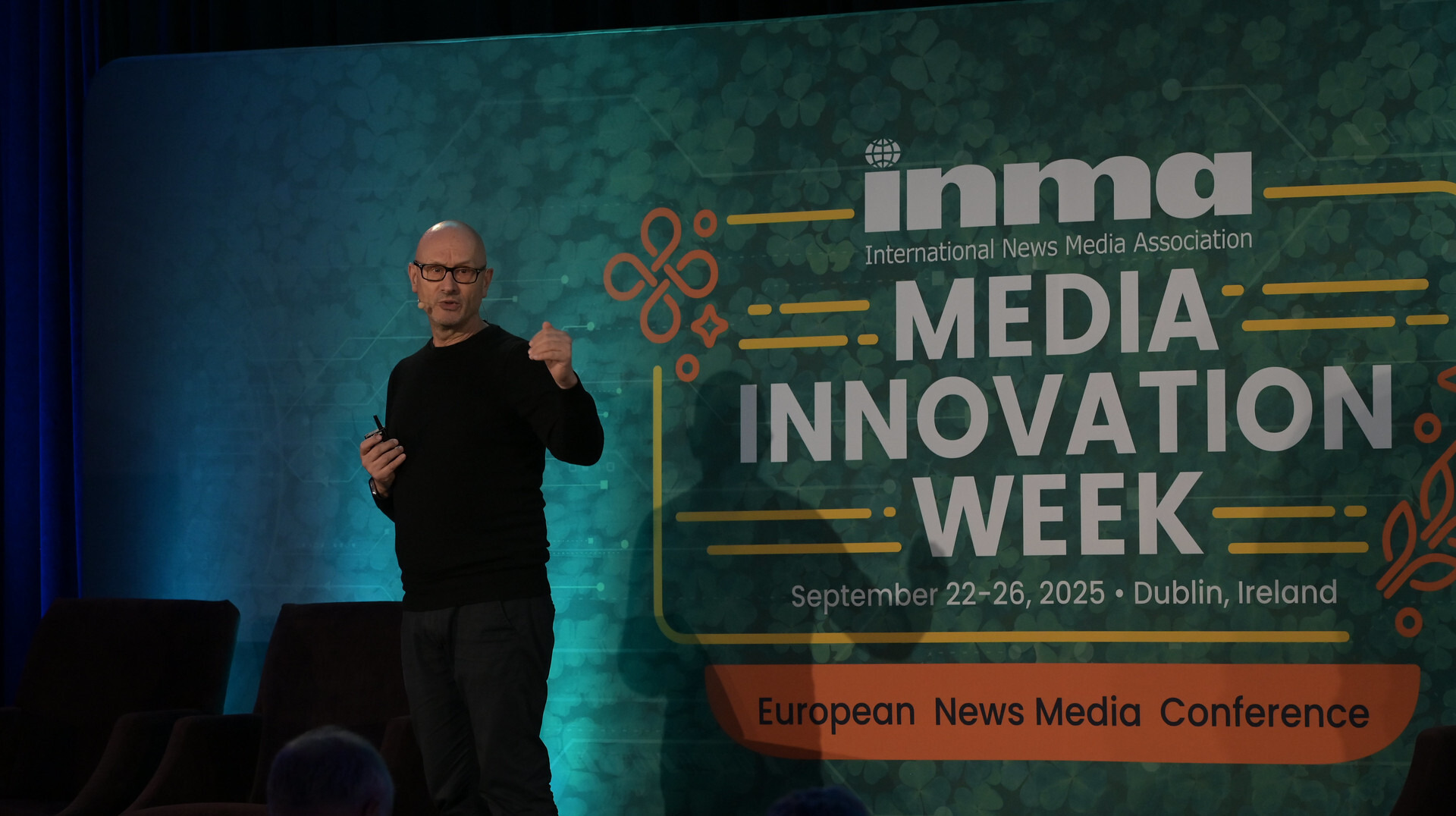
Newsletter